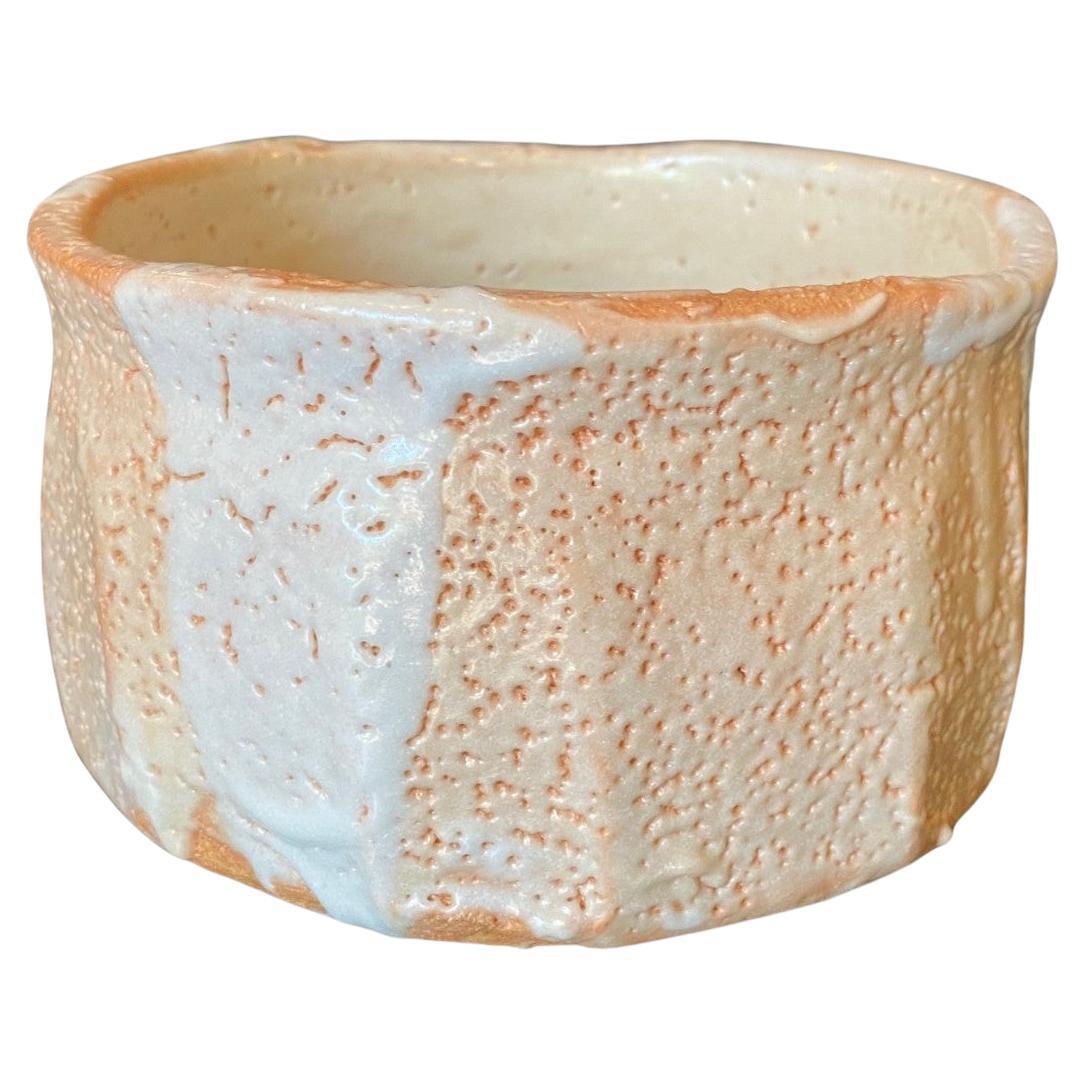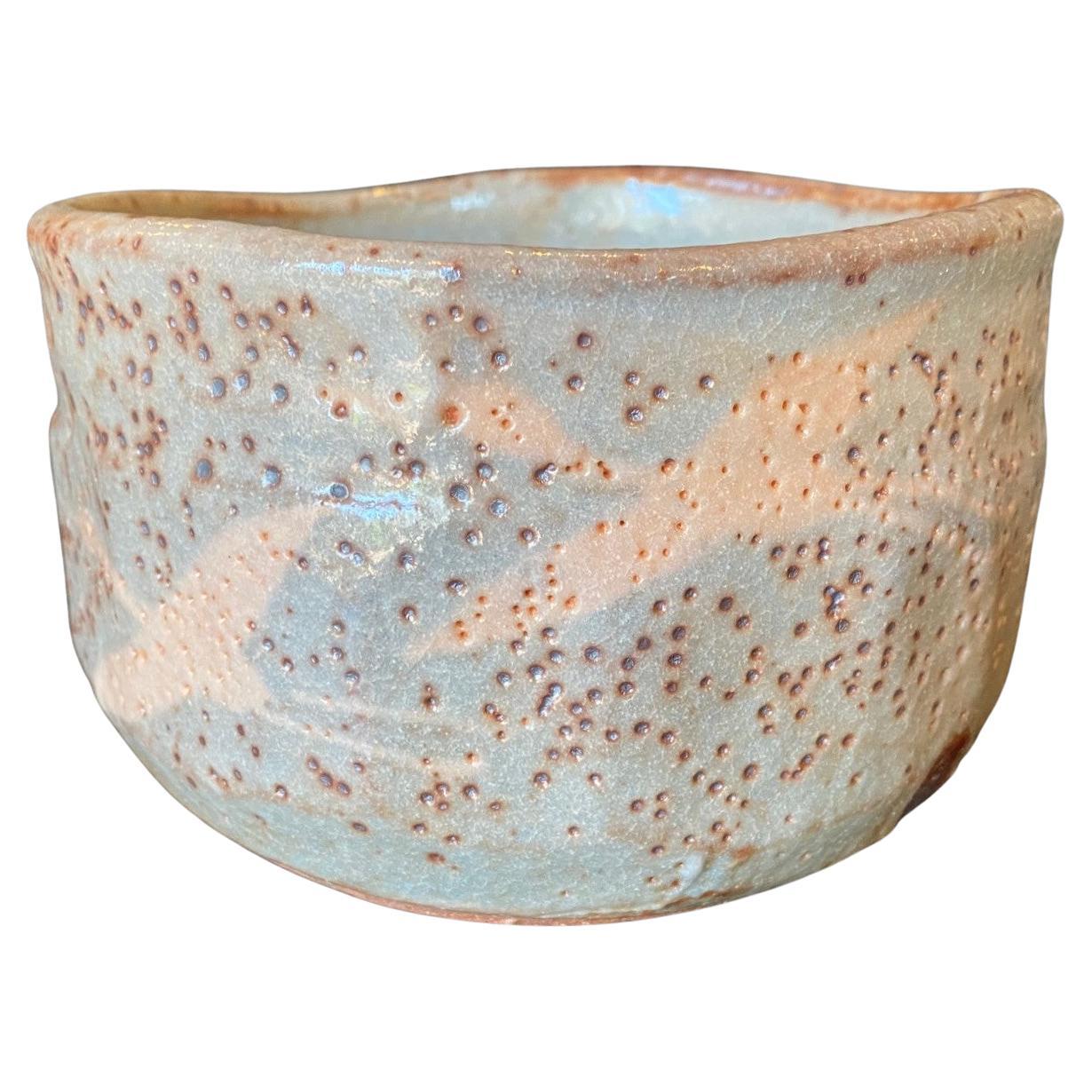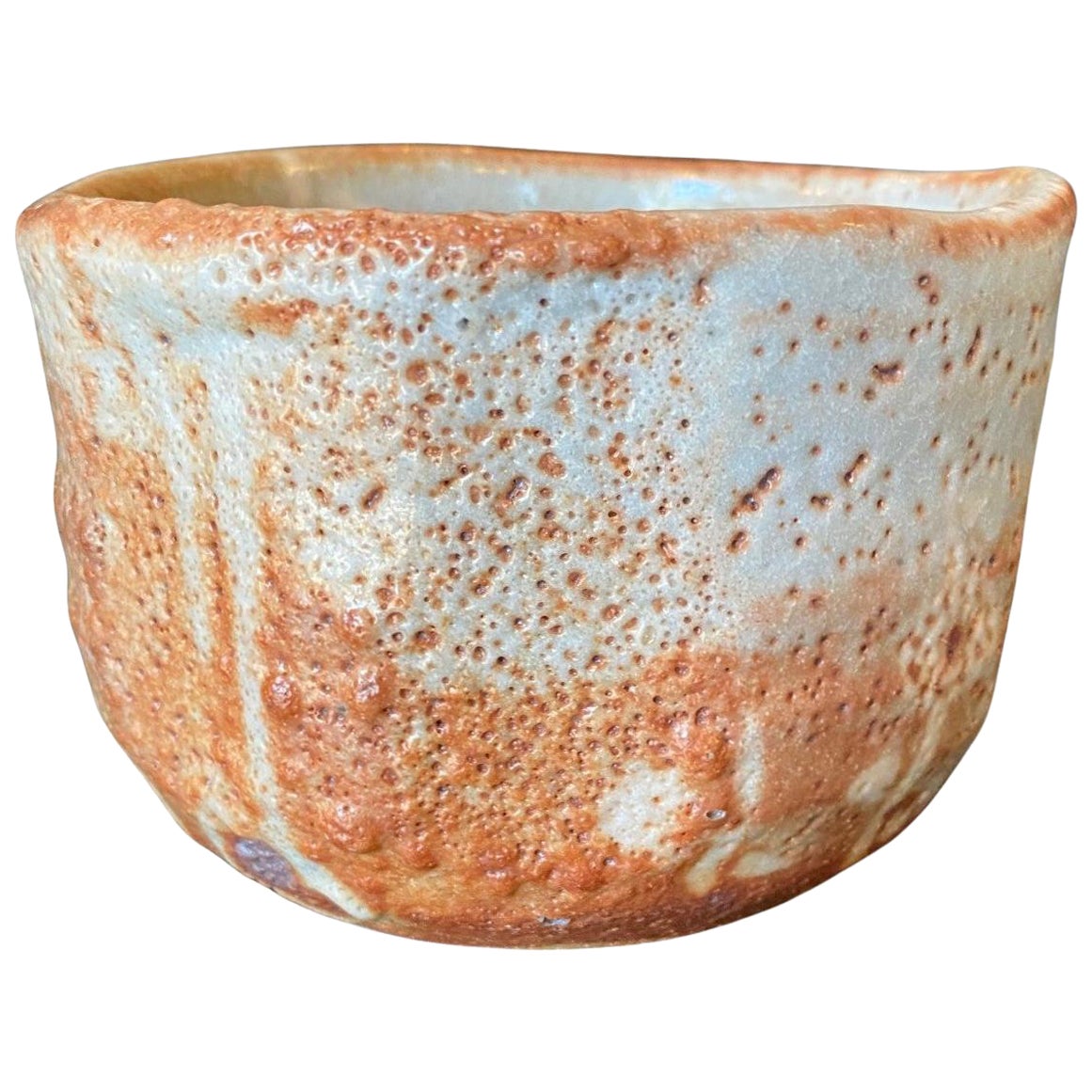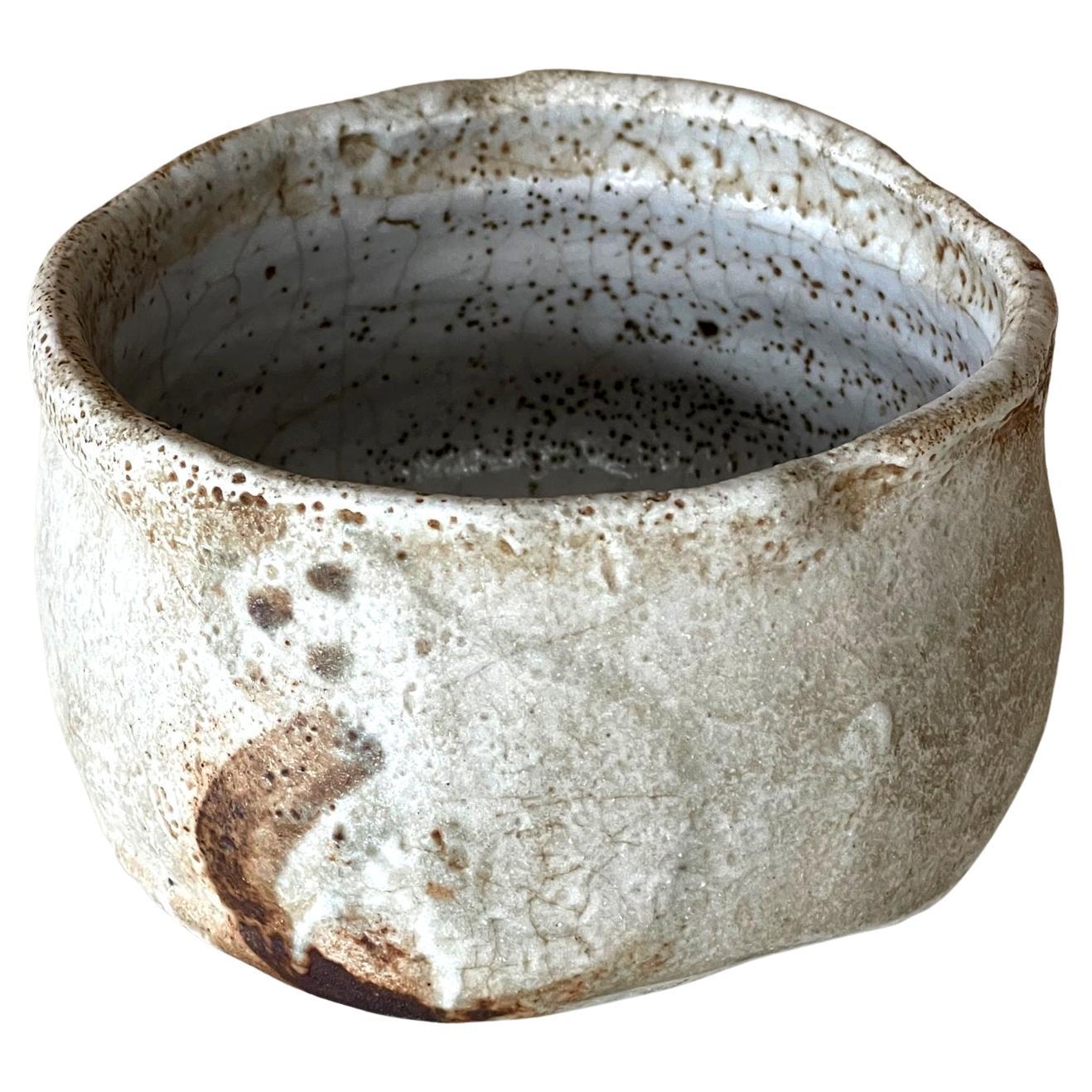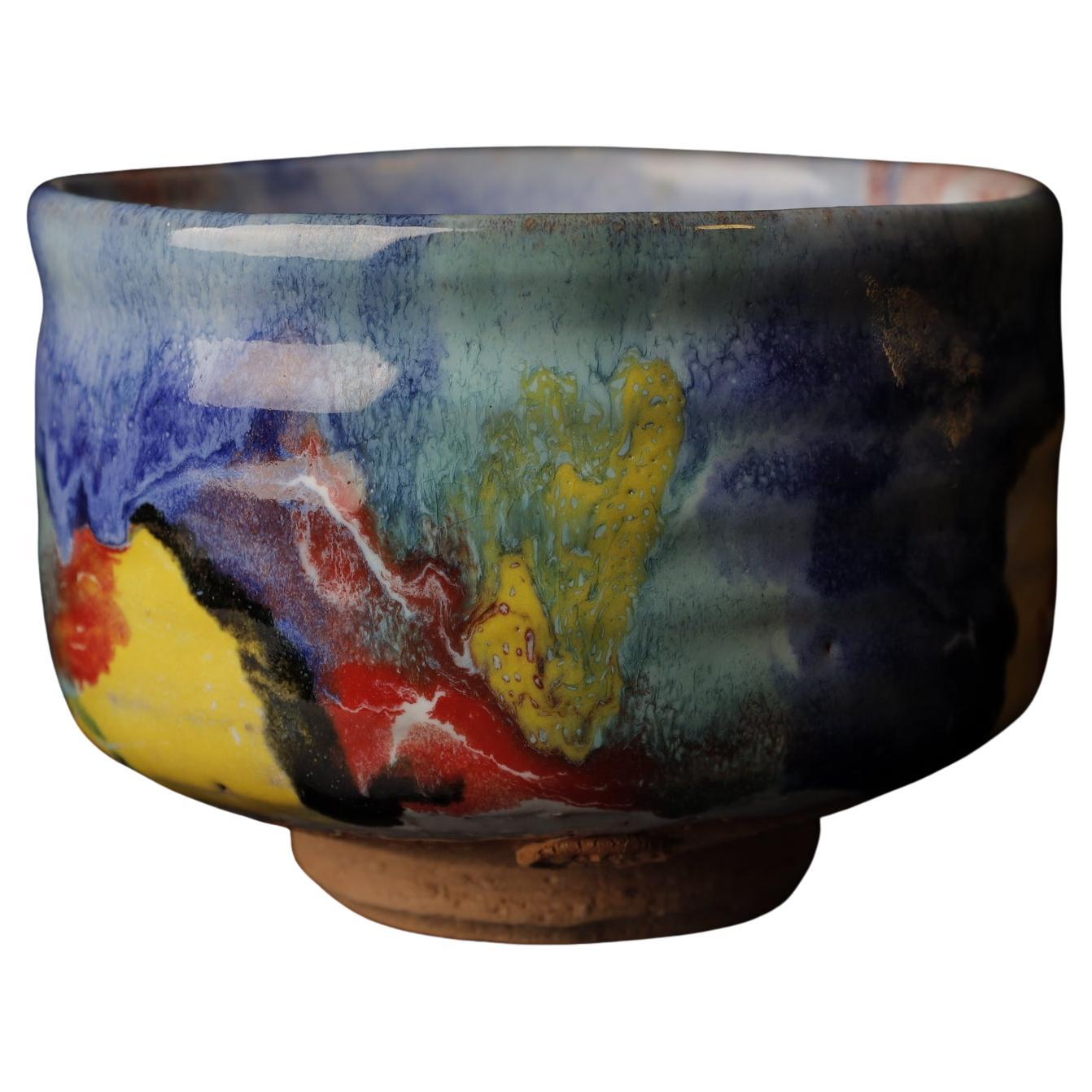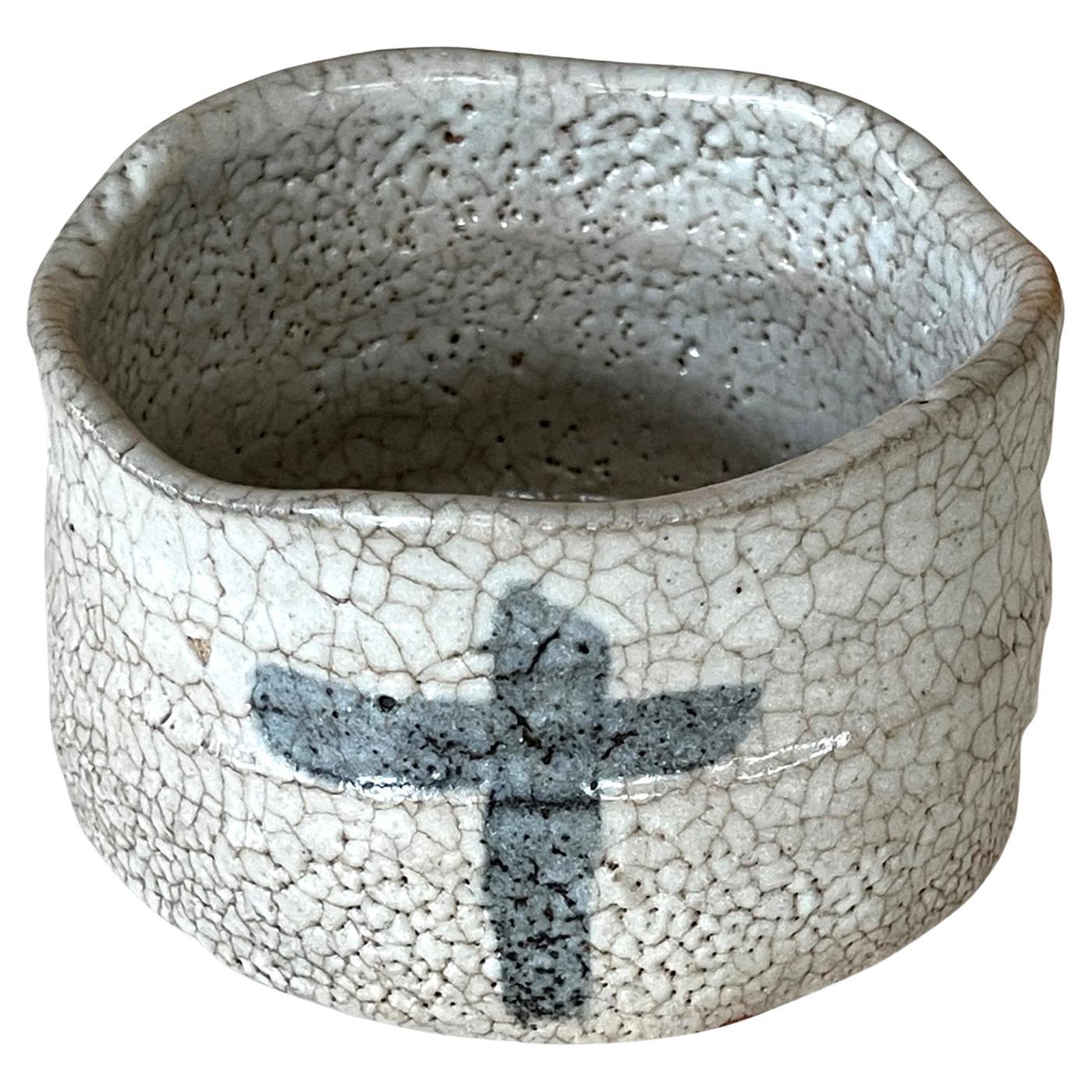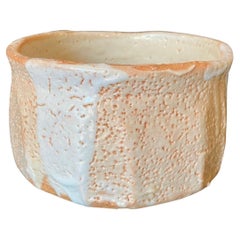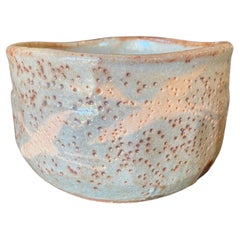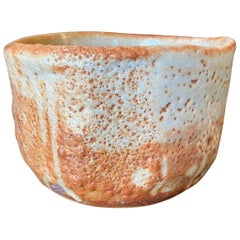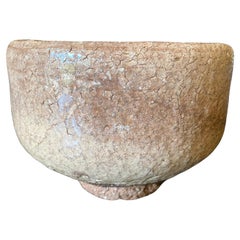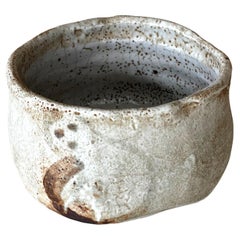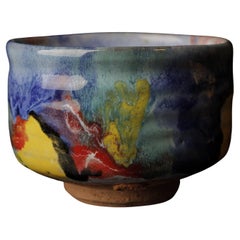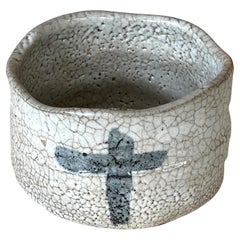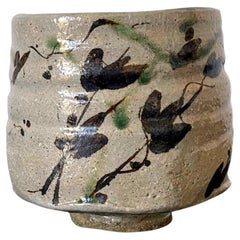Items Similar to Shinbei Sakakura X (10th) Japanese Hagi Yaki Ware Pottery Chawan Tea Bowl & Box
Want more images or videos?
Request additional images or videos from the seller
1 of 21
Shinbei Sakakura X (10th) Japanese Hagi Yaki Ware Pottery Chawan Tea Bowl & Box
About the Item
A wonderfully hand crafted and beautifully glazed Hagi Yaki Ware Chawan tea bowl by the 10th Shinbei Sakakura (X). This piece has quite a special feel to it. The Chawan radiates in the light.
For generations the Shinbei Sakaura family line have been considered the finest Hagi pottery artists in Japan. Many have been named intangible cultural properties by the Japanese government. The family is currently on the 15th generation of master potters. This piece was created by the 10th Shinbei Sakakura some 180-190 years ago.
Hagi ware (萩焼, Hagi-yaki) is a type of Japanese pottery traditionally originated from the town of Hagi, Yamaguchi, in the former Nagato Province and can be traced back to the arrival of Korean potters to Hagi following Japan's military invasion of the Korean peninsula in the late 16th century.
The Chawan is high fired stoneware and features an off white flowing translucent crackle glaze with shifting colors and textures.
The original Shinbei Sakakura signed tomobako wooden storage box is included.
A rare, scarce, special piece. Would be a great addition to any Japanese or Asian pottery/ceramics collection ot make for an eye catching stand alone accent work in about any setting.
Bowl dimensions: 3.1" high, 5.25" wide, 5" deep
Box: 4" x 6" x 6"
- Dimensions:Height: 4 in (10.16 cm)Width: 6 in (15.24 cm)Depth: 6 in (15.24 cm)
- Style:Edo (Of the Period)
- Materials and Techniques:
- Place of Origin:
- Period:
- Date of Manufacture:Mid 1800s
- Condition:The tea bowl is in very good vintage condition with no discernable flaws, cracks, chips, etc... The wood box may have light natural organic wear consistent with age and use (please see photos). Beautiful and engaging overall.
- Seller Location:Studio City, CA
- Reference Number:1stDibs: LU2254343679282
About the Seller
5.0
Platinum Seller
Premium sellers with a 4.7+ rating and 24-hour response times
1stDibs seller since 2016
872 sales on 1stDibs
Typical response time: <1 hour
- ShippingRetrieving quote...Shipping from: Van Nuys, CA
- Return Policy
Authenticity Guarantee
In the unlikely event there’s an issue with an item’s authenticity, contact us within 1 year for a full refund. DetailsMoney-Back Guarantee
If your item is not as described, is damaged in transit, or does not arrive, contact us within 7 days for a full refund. Details24-Hour Cancellation
You have a 24-hour grace period in which to reconsider your purchase, with no questions asked.Vetted Professional Sellers
Our world-class sellers must adhere to strict standards for service and quality, maintaining the integrity of our listings.Price-Match Guarantee
If you find that a seller listed the same item for a lower price elsewhere, we’ll match it.Trusted Global Delivery
Our best-in-class carrier network provides specialized shipping options worldwide, including custom delivery.More From This Seller
View AllJapanese Asian Antique Shino Yaki Ware Studio Pottery Wabi-Sabi Chawan Tea Bowl
Located in Studio City, CA
A beautiful Japanese Mingei Shino Ware (志野焼, Shino-Yaki) pottery Chawan tea bowl for tea ceremony that features a sumptuous glaze with wonderful subtle shifts in color, pattern, and ...
Category
Mid-20th Century Japanese Showa Ceramics
Materials
Pottery, Stoneware
Japanese Asian Antique Shino Yaki Ware Studio Pottery Wabi-Sabi Chawan Tea Bowl
Located in Studio City, CA
A beautiful Japanese Mingei Nezumi Shino Ware (志野焼, Shino-Yaki) pottery Chawan tea bowl for tea ceremony that features a sumptuous glaze with wonderful subtle shifts in color, patter...
Category
Mid-20th Century Japanese Showa Ceramics
Materials
Pottery, Stoneware
Japanese Asian Antique Shino Yaki Ware Studio Pottery Wabi-Sabi Chawan Tea Bowl
Located in Studio City, CA
A beautiful Japanese Mingei Nezumi Shino Ware (志野焼, Shino-Yaki) pottery Chawan tea bowl for tea ceremony that features a sumptuous glaze with wonderful subtle shifts in color, patter...
Category
Mid-20th Century Japanese Showa Ceramics
Materials
Pottery, Stoneware
Shuen Yoshida Signed Vintage Japanese Hagi Ware Japanese Pottery Bowl with Box
Located in Studio City, CA
A beautiful Hagi Yaki Ware pottery Chawan tea bowl by renowned Japanese potter Shuen (Shoen) Yoshida (1940-1987). Yoshida was an apprentice of Miwa Kyusetsu (1910-2012) who was awar...
Category
Vintage 1970s Japanese Showa Ceramics
Materials
Pottery, Stoneware
Ogata Kenzan Signed Japanese Asian Edo Period Pottery Tea Bowl Chawan
Located in Studio City, CA
A spectacularly designed and beautifully made Chawan tea bowl dating back to the Edo period. This work is attributed to Ogata Kenzan (1663-1743) who is wi...
Category
Antique 18th Century Japanese Edo Ceramics
Materials
Pottery
Shiko Shikou Munakata Rare Signed Japanese Pottery Chawan Tea Bowl Signed Box
By Shiko Munakata
Located in Studio City, CA
An exceptionally rare, wonderfully designed Chawan tea bowl by famed Japanese master woodblock printmaker/ artist Shiko Munakata (1903-1975) who is widely considered to be the most important Japanese visual artist of the 20th century and the Pablo Picasso of Japan. This hand-painted work clearly illustrates Munakata's whimsical side as it is of a Koma - a child's spinning top toy. Very few examples of Munakata's work in ceramics exist still today.
The work is signed by Munakata on the base as well as the original wood protective storage box (his seal can also be seen faintly in the lower-left corner).
The bowl has a small kintsugi or "golden joinery" repair - the Japanese art of repairing broken pottery by mending the areas of breakage with lacquer dusted or mixed with powdered gold - on the inside. As a philosophy, it treats breakage and repair as part of the history of an object, rather than something to disguise.
Munakata who is often compared to Picasso was primarily associated with and a principal figure in both the Sosaku-Hanga (which stressed the artist as the sole creator ) and the Mingei (folk art) movements. His many accolades and awards include the "Prize of Excellence" at the Second International Print Exhibition in Lugano, Switzerland in 1952, and first prize at the São Paulo Bienal Exhibition in Brazil in 1955, followed by the Grand Prix Award at the Venice Biennale in 1956, and the Order of Cultural Merit, the highest honor in the arts by the Japanese government in 1970. In 1960 after returning from a year abroad exhibiting his work in the United States, the Horinji Temple in Kyoto bestowed upon him the honorary rank of “Hokkyo”. In 1962, he received the rank of “Hogan” from Nisseki Temple in Toyama prefecture. He also received a Medal of Honor in 1963 and the Asahi Shimbun culture prize in 1965.
Munakata's work can be found in numerous international collections and museums including:
The Britsih Museum, UK
The Chicago Art Institute
Museum of Modern Art (MOMA), NY
The Metropolitan Museum of Art (The Met), NY
The Philadelphia Museum of Art
The Smithsonian American Art Museum (SAAM), Washington DC
Kemper Art Museum, St. Louis
And his own museum The Munakata Shiko...
Category
Mid-20th Century Japanese Showa Ceramics
Materials
Ceramic
You May Also Like
Antique Japanese Shino Ware Chawan Tea Bowl
Located in Atlanta, GA
On offer is a Japanese ceramic tea bowl (chawan) used in the traditional chado ceremony. The bowl was potted in clog form with a ring foot shaved extremely low. Its size and harmonious proportion make it perfect to be held in both hands during chado. Classified as shino ware...
Category
Antique 18th Century Japanese Edo Ceramics
Materials
Ceramic
Hagi-ware Chawan (tea bowl) by famous Seigan Yamane
Located in Fukuoka, JP
This exquisite Japanese tea bowl is a prime example of Hagi Ware, crafted by renowned potter Seigan Yamane. Known for his innovative approach to traditional Hagi pottery, Yamane’s wo...
Category
21st Century and Contemporary Japanese Ceramics
Materials
Ceramic
Japanese Shino Ware Chawan Tea Bowl by Toyoda Katsuhiko
Located in Atlanta, GA
A modern Japanese ceramic tea bowl (chawan) made by potter Toyoda Katsuhiko (1945-). The bowl was potted in clog form with a short ring foot in the tradition of Shino ware...
Category
20th Century Japanese Edo Ceramics
Materials
Ceramic
Japanese Mino Ware Oribe Type Chawan Tea Bowl
Located in Atlanta, GA
A Japanese Kutsu-gata (clog-shaped) chawan (tea bowl) circa 19th century possibly older. The stoneware bowl potted from buff clay has a slight irregular shape and an unusual depth for a tea bowl. Of Mino ware...
Category
Antique 19th Century Japanese Meiji Ceramics
Materials
Ceramic
Small Japanese Oni Hagi Chawan (Tea Bowl) by Seigan Yamane, circa 2010, Japan
Located in Austin, TX
A small but powerful Japanese white oni hagi yaki chawan (teabowl) by renowned contemporary master potter Seigan Yamane (b. 1952), circa 2010, Japan.
The small tea bowl of typical t...
Category
2010s Japanese Ceramics
Materials
Pottery
Japanese Tea Ceremonial Hagi Pottery Vase
Located in Chiba, JP
Showa period, 20th century, Japan, approx. H 27.5cm (10.82in), with the seal of ‘Hagi-glazed vase by Jinzo Ishibe’ at lower part and the sign of ‘Jinzo’ at the bottom
Category
20th Century Japanese Ceramics
Materials
Ceramic
Recently Viewed
View AllMore Ways To Browse
6 X 4 Box
Antique Japanese Pottery
Japan Ware
Town Pottery
Antique Pottery Names
Military Box
Signed Japanese Pottery
Pottery Bowl Japan
Crackle Pottery
Crackle Light
Potters Stand
16th Century Japanese
Pottery Mid Century Japanese
Antique Fire Boxes
Antique White Stoneware
Antique Fire Bowl
Antique Wooden Storage Box
Lined Japanese Box
